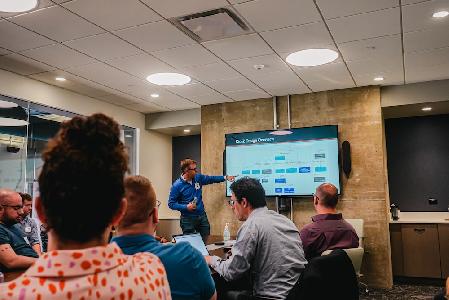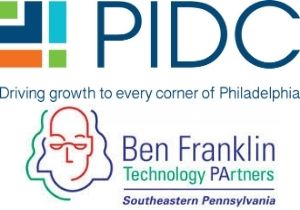
Technical.ly's Editorial Calendar explores a different topic each month. The March 2017 topic explores augmented and virtual reality. See AR/VR coverage from all five of our East Coast markets here.
In the advertising industry we strive to uncover the most impactful ways for brands to tell their stories. Sometimes it’s through a TV spot or an engaging social campaign, and sometimes it’s through a shiny, new technology. And right now, the shiniest toys in advertising are augmented reality (AR) and virtual reality (VR).
AR is awesome for storytelling because it adds another dimension of informative or entertaining content to the physical world. People don’t realize it, but AR is already a big part of our lives. Anytime you use a Snapchat Lens to transform into a puppy or try to catch a Pikachu in Pokemon Go, you’re participating in an AR experience.
Beyond entertainment, AR can become an indispensable utility for us at home and at work. As documented in Harvard Business Review, AR is “closing the skills gap” for manufacturing workers and technicians. Our client GE (along with Boeing and a few other companies) has been testing AR headsets internally, resulting in an average productivity improvement of 32 percent. That’s massive!
At Allen & Gerritsen, we’ve harnessed this technology by building an interactive AR print ad for Sunoco. We wanted to elevate print media beyond its static form, so to extend the “Essence of Racing” campaign we partnered with Philly company Stuzo to create a print ad that you can bring to life with your smartphone. We’ve also developed prototypes that exist outside of smartphones, like an interactive whiteboard in our office. Check it out below.
VR may have an even greater impact on storytelling, providing us with the power to fully immerse someone in an experience and capture 100 percent of their attention, which is pretty hard to do these days. By placing the user at the core of an experience, VR can increase empathy and create a strong, one-to-one connection between a person and a brand.
The coolest stuff in VR/AR right now are full-scale experiences powered by “inside-out” tracking. Companies like The VOID are leveraging these advancements to create insane immersive experiences where users can move around a large physical space, but see a totally digitally-rendered environment. This adds mobility to VR and allows people to go beyond passively consuming content in a chair. These experiences will flourish as gaming and entertainment evolves, creating even more hype for the technology.
Over the past two years, my team at A&G has built multiple VR experiences, ranging from an interactive “Rock, Paper, Scissors” game to a virtual office tour that we bring to recruiting events. We’re also in discussion with a top client about building an immersive virtual tour, which would be showcased at trade shows and as part of their media kit. Because context can be just as powerful as content.
AR and VR are game-changers. They have the ability to entertain, excite and provide practical utility through immersive experiences. They’re not necessarily a replacement for traditional media, but they’re additional tools that modern marketers and agencies must have in their storytelling arsenal.
Join the conversation!
Find news, events, jobs and people who share your interests on Technical.ly's open community Slack

Philly daily roundup: Student-made college cost app; Central High is robotics world champ; Internet subsidy expiration looms

Philly daily roundup: Earth Day glossary; Gen AI's energy cost; Biotech incubator in Horsham

Gain knowledge and skills at the Technical.ly Developers Conference during Philly Tech Week 2024

